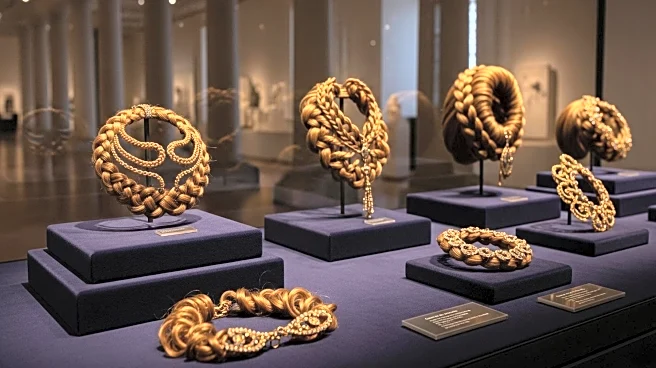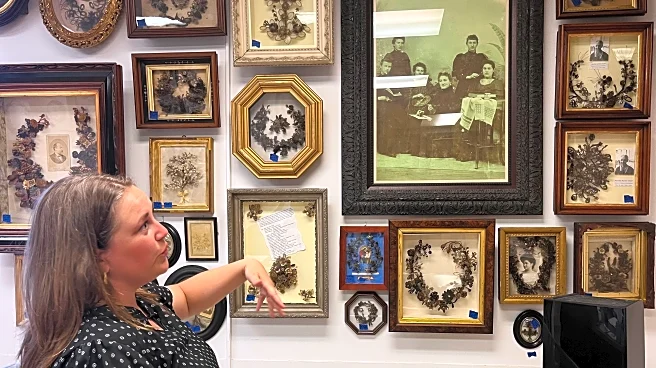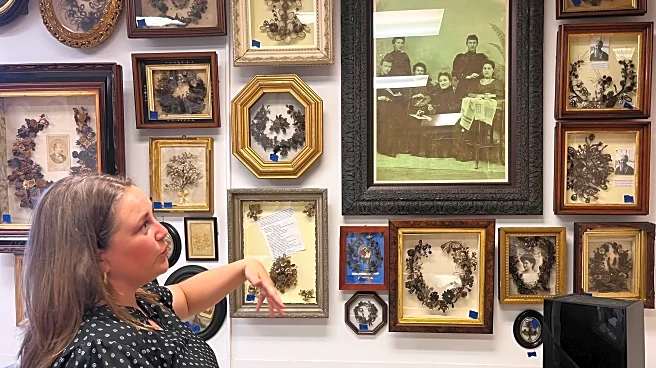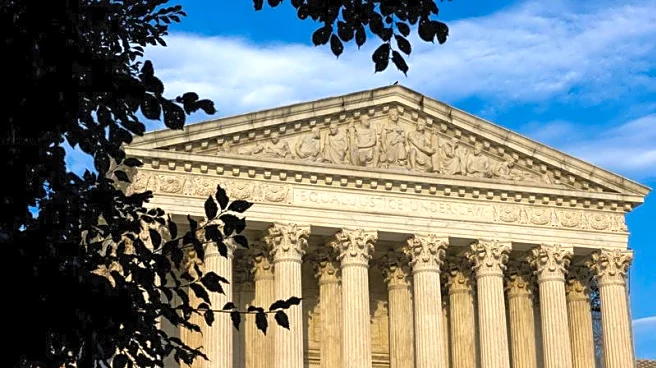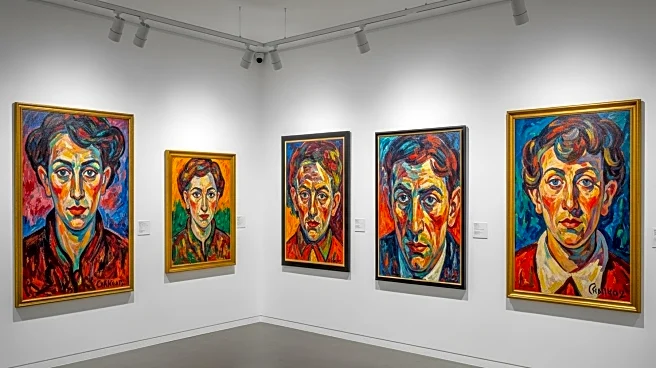What is the story about?
What's Happening?
Leila's Hair Museum in Independence, Missouri, known for its unique collection of hair art, has closed following the death of its founder, Leila Cohoon, at age 92. The museum housed over 3,000 pieces of hair art, including locks from Marilyn Monroe and other historical figures. Cohoon's granddaughter, Lindsay Evans, is now tasked with redistributing the collection to various museums across the United States, such as the Metropolitan Museum of Art and the National Museum of Women in the Arts. The collection includes wreaths made from human hair, jewelry memorializing the deceased, and other intricate hair art pieces. The museum attracted visitors from diverse backgrounds, including celebrities like Ozzy Osbourne and Phyllis Diller.
Why It's Important?
The closure of Leila's Hair Museum marks the end of a unique cultural institution that preserved a rare form of art largely created by women in the 19th century. This art form, which involved crafting jewelry and wreaths from human hair, offers insights into historical mourning practices and personal storytelling. The redistribution of the collection to major museums ensures that this art will continue to be accessible to the public, preserving its cultural and historical significance. The museum's closure also highlights the challenges faced by niche cultural institutions in maintaining operations and securing legacies.
What's Next?
Lindsay Evans is actively working to rehome the museum's collection, ensuring that the pieces find new homes in museums across the country. This process involves collaboration with institutions like the National Museum of Funeral History, which has already acquired several pieces. The transition may lead to increased public exposure and appreciation for hair art, as these pieces are integrated into larger museum collections. Evans faces the emotional challenge of parting with her grandmother's legacy while fulfilling her wish for the art to be widely seen and appreciated.
Beyond the Headlines
The museum's closure raises broader questions about the preservation of unconventional art forms and the role of women in art history. Hair art, often dismissed due to its association with domestic crafts, is gaining recognition as a significant cultural artifact. The rehoming of the collection may inspire renewed interest in this art form and encourage museums to explore other overlooked artistic traditions. Additionally, the museum's story underscores the importance of personal passion and dedication in preserving cultural heritage.
AI Generated Content
Do you find this article useful?
